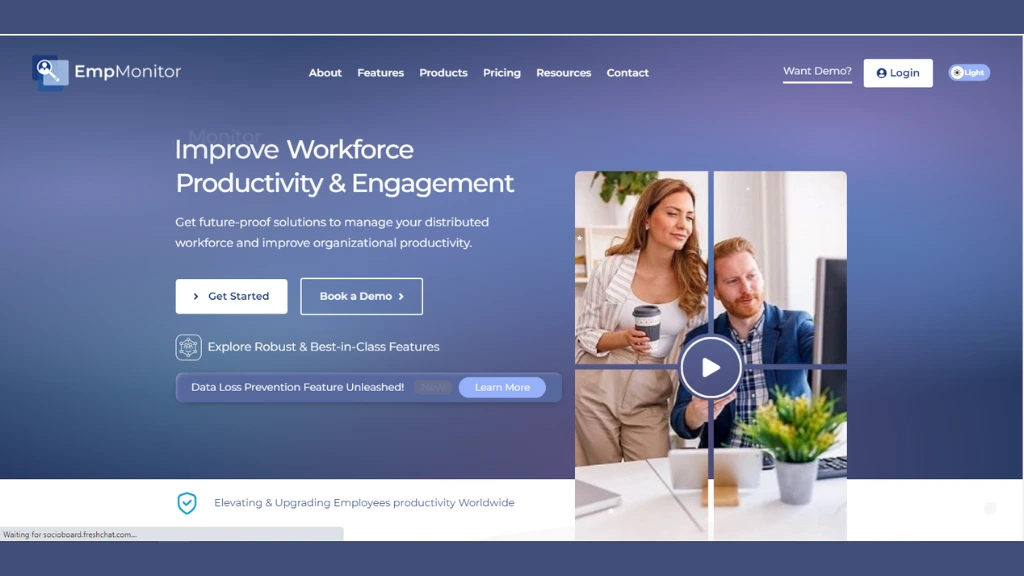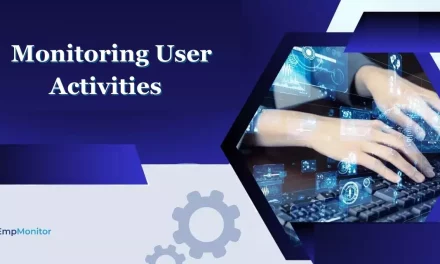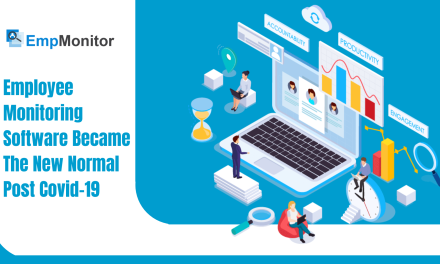Employee daily activity encompasses the various tasks, projects, and collaborative efforts undertaken by individuals within an organization.
It is a multifaceted concept that includes daily responsibilities, project-based assignments, and interactions with colleagues.
The effectiveness of employee activity directly influences the overall productivity and success of an organization.
In this blog, we delve into understanding the importance of employee daily activity, its objectives, and its critical role in shaping the success of businesses.
We will uncover strategies for optimizing activity and fostering a collaborative work culture.
Join us as we navigate through the key elements that drive efficiency and propel organizations toward their goals.
Listen To The Podcast Now!
Importance of Employee Activity for Organizational Success
The significance of employee activity cannot be overstated in the context of organizational success. It serves as a factor in achieving operational efficiency, meeting project deadlines, and fostering a positive work culture. Active engagement and employee’s increased productivity contribute to the overall growth and profitability of a company.
Objectives of Optimizing Employee Activity
Optimizing the activity of employees aims to enhance productivity, improve work quality, and foster a positive work environment.
The factors that influence employee daily activity can be understood and addressed to promote efficiency, job satisfaction, and success.
Types of Employee Activities
- Daily Tasks
Daily tasks form the foundation of staff activity. These include routine responsibilities that individuals perform as part of their job roles. Using an employee activity tracker can help monitor and streamline these daily tasks, ensuring efficiency and timely completion. - Project-based Activities
Many employees are involved in project-based activities, often with specific timelines and milestones. Tracking software tailored for project-based activities can aid in monitoring progress, identifying bottlenecks, and ensuring successful project completion within deadlines. - Collaborative Activities
Collaboration is a key aspect of modern workplaces. Employees frequently engage in collaborative activities such as team meetings, brainstorming sessions, and group projects. User Activity Monitoring software facilitates monitoring collaborative efforts, enhancing communication, and fostering teamwork.
Factors Influencing Employee Activity
Employee daily activity can be influenced by many factors, some of which include:
Work Environment
The work environment plays a crucial role in shaping employee activity. A positive and supportive workplace can boost morale and productivity. On the other hand, a stressful or unfavorable environment may lead to decreased efficiency. Utilizing computer activity tracker tools can provide insights into the impact of the work environment on employee performance.
Motivation Factor
Motivated employees are more likely to be actively engaged in their work. Employee engagement initiatives, such as team-building activities and recognition programs, contribute to boosting motivation levels. Incorporating these initiatives can positively influence staff activity and job satisfaction.
Time Management
Effective time management is essential for optimizing staff activity. Employees often face challenges in prioritizing tasks and managing their time efficiently. Training programs focused on time management skills can empower employees to organize their workload and improve productivity.
Strategies For Optimizing Employee Activity
The following strategies can help you optimize employee daily activity:
Employee Training and Development
- Skill Enhancement Programs
Investing in skill enhancement programs equips employees with the knowledge and capabilities required to excel in their roles. These programs contribute to the continuous development of employees and enhance their overall competence. - Professional Development Opportunities
Offering opportunities for professional development demonstrates a commitment to employee growth. Workshops, seminars, and conferences allow employees to expand their skills and stay updated on industry trends.
Employee Engagement Initiatives
- Team-building Activities
Team-building activities foster collaboration and camaraderie among employees. These activities can range from off-site retreats to virtual team-building exercises. They contribute to a positive work culture and enhance overall employee satisfaction. - Recognition and Rewards
Recognizing and rewarding employees for their efforts is a powerful motivator. Whether through the employee of the month programs or performance bonuses, acknowledging achievements boosts morale and encourages continued dedication.
Flexible Work Arrangements
- Remote Work Options
The rise of remote work has transformed traditional work structures. Allowing employees to work remotely, facilitated by computer activity tracker tools, provides flexibility and can lead to increased productivity and job satisfaction. - Flexible Hours
Implementing flexible working hours accommodates the diverse needs of employees. This strategy empowers individuals to manage their work schedules effectively, promoting a healthy work-life balance.
Technology Integration
- Employee Activity Monitoring Tools
Integrating employee activity tracking tools, Empmonitor allows organizations to monitor computer activities, track task progress, and analyze work patterns. This data-driven approach enables employers to identify areas for improvement and optimize employee performance.
Here is what EmpMonitor has to offer you: Time Tracking: With EmpMonitor, you can keep track of how much time your team spends on different tasks. This lets you check their productivity and helps manage time and assign tasks accurately.
Activity Monitoring: The software gives you insights into the apps and websites your team uses while working. It helps spot any distractions and promotes a more focused work atmosphere.
Screenshots and Keystroke Logging: EmpMonitor takes screenshots and records keystrokes, giving you a better idea of how your team works. This feature is handy for training, quality control, and meeting compliance requirements.
Project Management: It helps with project management by monitoring task progress and project status, making it easier to manage resources and meet deadlines.
Security and Data Protection: EmpMonitor boosts security by preventing data breaches and unauthorized access to sensitive information. This is especially important for remote teams with different levels of cybersecurity awareness.
You can create a more efficient and productive team by investing in employee tracking software such as EmpMonitor for managing remote teams. This ensures that your team has the necessary resources to succeed in their remote work environment, making virtual team management easier for you.
- Collaboration PlatformsUtilizing collaboration platforms enhances communication and coordination among team members. Platforms like Slack or Microsoft Teams facilitate real-time collaboration, improving efficiency in collaborative activities.
Also Read
WHY SHOULD EFFECTIVE TIME MANAGEMENT BE USED ROUTINELY?
09 BEST TIPS TO INCREASE PRODUCTIVITY IN THE WORKPLACE
REMOTE EMPLOYEE MANAGEMENT: ALL THE CHALLENGES AND 05 BEST WAYS TO FACE THEM
Benefits of Employee Activity Monitoring
Implementing employee activity monitoring systems yields various benefits for both employees and organizations. These include:
- Increased productivity: User activity Monitoring and optimizing staff activity leads to improved efficiency and higher output.
- Enhanced accountability: Tracking activities promotes accountability among employees, encouraging them to meet deadlines and fulfill responsibilities.
- Performance insights: Monitoring tools provide valuable insights into employee performance, helping identify strengths and areas for improvement.
- Data-driven decisions: Employers can make informed decisions based on data obtained from activity tracking, leading to more effective strategies for employee optimization.
- Employee Well-being: Activity monitoring contributes to a healthier work-life balance by identifying work patterns that may lead to burnout. This, in turn, fosters a more supportive and sustainable work environment for team members, thus turning them into high performance employees.
- Resource Allocation: Monitoring systems allow organizations to allocate resources more effectively by understanding peak activity periods and optimizing staffing levels accordingly.
- Identifying Training Needs: By analyzing employee activity, organizations can pinpoint areas where additional training may be beneficial, ensuring continuous professional development and skill enhancement.
- Risk Mitigation: Activity tracking helps identify potential risks, security breaches, or compliance issues, allowing organizations to take proactive measures to mitigate these risks before they escalate.
- Employee Engagement: Monitoring tools can be used to gauge employee engagement levels, facilitating the implementation of targeted initiatives to improve morale and job satisfaction.
- Legal Compliance: Ensuring that employee activities align with legal and regulatory requirements is crucial. Activity monitoring assists in maintaining compliance and avoiding legal issues related to work practices.
- Customized Performance Metrics: Organizations can tailor performance metrics based on real-time data, providing a more accurate reflection of individual and team accomplishments.
- Remote Work Optimization: With the rise of remote work, activity monitoring enables organizations to assess and enhance the effectiveness and remote employee management, ensuring productivity and collaboration despite physical distance.
- Proactive Issue Resolution: Identifying issues in real-time allows organizations to address concerns promptly, preventing minor problems from escalating into larger challenges that may impact overall productivity.
- Employee Empowerment: Employees can benefit from activity monitoring by gaining insights into their work patterns, which can empower them to make adjustments for improved efficiency and job satisfaction.
Implementing employee activity monitoring goes beyond mere oversight; it provides a multifaceted approach to enhancing organizational dynamics and individual well-being. By leveraging the insights gained through monitoring systems, organizations can create an environment that not only maximizes productivity but also prioritizes the holistic development and satisfaction of their workforce.
Conclusion
Optimizing staff activity is a crucial aspect of achieving organizational success. By understanding the types of employee activities, addressing influencing factors, and implementing strategic initiatives, organizations can create a conducive environment for productivity and employee satisfaction.
Utilizing technology, such as employee activity tracking software and collaboration platforms, further enhances the efficiency of these workforce optimization strategies.
Ultimately, investing in the well-being and development of employees is an investment in the overall success and longevity of the organization.
















